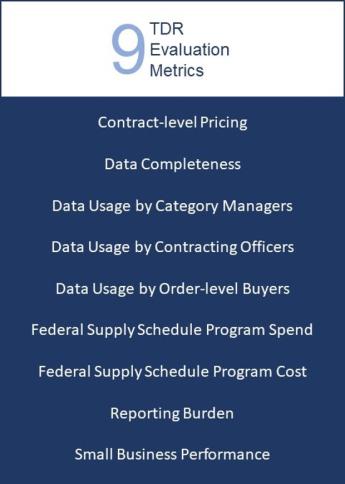
Transactional Data Reporting (TDR) pilot to become eligible for expansion
Post filed in: Acquisition
The last couple of years, we have announced the results of our Transactional Data Reporting pilot’s performance. Transactional Data Reporting is a pilot program that creates a more effective, less burdensome alternative to legacy pricing disclosure requirements.
Today I am pleased to announce this year’s results of the Transactional Data Reporting (TDR) pilot.
The FY 20 Pilot Evaluation Results
Yet again, we have seen TDR have great success in reducing pricing for our federal partners.
Looking at historical data, the pilot’s overall performance based upon a documented evaluation plan showed steady progress. This includes:
- FY 18 results revealed that overall price position was maintained and burden lowered. However, data remained questionable, and no buying strategies resulted.
- FY 19 results revealed substantial improvement in data completeness and in small business performance. However, we saw that the data hadn’t been used and data policy gaps existed.
- FY 20 results revealed that data completeness, contract-level pricing, and small business metrics all exceeded targets.

Since FY 19, performance on all nine evaluation metrics was maintained or showed improvement. Most importantly:
- For three years in a row, contract-level pricing was better when TDR was used than it was when under Most Favored Customer (MFC) Pricing;
- Small businesses participating with TDR generate much stronger sales growth than small businesses under the MFC pricing;
- The data is now 98 percent complete making it even more actionable; and
- Contracting officer usage of transactional data is improving, but there is more opportunity here to improve.
GSA has successfully demonstrated the value of TDR under the existing scope of the pilot. It has shown steady progress over the past four years, met most of the pilot’s objectives in the most recent year, and has made the necessary investments to leverage TDR’s potential in the years to come. We will continue to make improvements, especially in contracting officer usage.
As GSA considers how to build these practices into a broader strategy to expand transparency and create less burden on our industry partners, we plan to train contracting officers on the benefits of having access to more granular prices paid information and to support these efforts with management guidance, as necessary. GSA will also refine and consider:
- The ability of Federal Supply Schedule contracting officers to leverage transactional data for price negotiations in lieu of Commercial Sales Practices (CSP) and Price Reduction Clause (PRC) disclosures;
- The impact of an expanded data collection on GSA’s ability to leverage the data it currently collects;
- Impacts on current and future GSA Schedule contractors;
- Communication to industry partners ahead of changes;
- Training and tools for category managers that are currently not impacted by TDR; and
- Potential impacts on other FAS initiatives, such as MAS Consolidation and implementation of Section 876 of the FY 2019 National Defense Authorization Act.
The TDR pilot proved it is a more effective, less burdensome alternative to legacy pricing disclosure requirements. When TDR is used, government prices are lower, the reporting burden on contractors is reduced, and small businesses generate stronger sales growth.

 U.S. General Services Administration
U.S. General Services Administration
